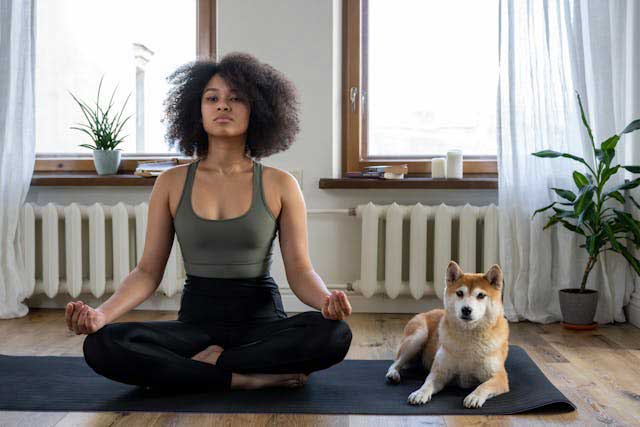Meditation is a powerful practice that offers numerous benefits for mental, emotional, and physical well-being. But it is not everyone that know how to practice meditation.
The mind wandering and other distractions that come with it, navigating them is one thing this article will help you achieve.
Whether you’re new to meditation or looking to refine your technique, here’s a step-by-step guide to help you establish a fulfilling meditation practice.
Interestingly, studies have identified different benefits of meditation and we have documented in our other article.
From reducing stress to boosting mental power, all of that comes with devoting some time to meditate (1)
1. Find A Quiet Space
Choose a quiet and comfortable space where you won’t be easily disturbed.
Indeed, this can be a corner of a room, a cushion in a quiet corner, or even a designated meditation area.
2. Get Comfortable
Sit or lie down in a comfortable position. If sitting, maintain an upright posture with your spine straight, shoulders relaxed, and hands resting on your lap or knees.
The image above should help you catch it quick.
3. Focus on Your Breath
Close your eyes and bring your attention to your breath.
Notice the natural flow of your breath, whether it’s the rise and fall of your chest or the sensation of air passing through your nostrils.
4. Mindful Breathing
Engage in mindful breathing.
Breathe in slowly through your nose, allowing your lungs to fill with air.
Exhale slowly through your mouth.
Focus on each breath, bringing your attention back if your mind starts to wander.
5. Choose a Meditation Technique
Explore different meditation techniques to find what suits you best:
- Guided Meditation: Listen to a meditation guide or use meditation apps that provide audio guidance.
- Mantra Meditation: Repeat a word, phrase, or mantra silently or aloud. It can be a calming word or one with personal significance.
For instance, when I meditate, I say to myself: “I am the light of the world and a city set on a hill”. - Body Scan Meditation: Direct your attention to different parts of your body, releasing tension and promoting relaxation.
6. Set A Time Limit
Meditation is not supposed to be forever. As such, it is important that you have a time-frame.
Especially for beginners, start with shorter sessions, gradually increasing as you become more comfortable.
Aim for 5 to 10 minutes initially and extend the duration as you feel more at ease.
7. Accept Thoughts Without Judgment
Really, it’s normal for your mind to wander during meditation. Instead of resisting thoughts, acknowledge them without judgment and gently bring your focus back to your breath or chosen point of concentration.
8. Establish A Consistent Practice
Consistency is key to reaping the benefits of meditation.
Set aside time each day for your practice, whether it’s in the morning, during a break, or before bedtime.
9. Gradual Progression
Most importantly, as you become more familiar with meditation, experiment with longer sessions or more advanced techniques.
Basically, the key is to progress at a pace that feels comfortable for you.
10. Be Patient and Gentle with Yourself
More so, meditation is a skill that develops over time. Be patient with yourself, and don’t get discouraged if your mind is restless at the beginning.
You see, the practice is about cultivating awareness and presence.
11. Reflect After Each Session
Most importantly, take a moment after each session to reflect on how you feel.
Notice any changes in your mood, stress levels, or overall sense of well-being.
This self-reflection can be motivating and help you track your progress.
12. Explore Different Resources
Indeed, there are countless resources available, including books, apps, and online platforms that offer guided meditations.
Explore different styles and find what resonates with you.
13. Join A Meditation Group
Consider joining a meditation group or class. Meditating with others can provide support, motivation, and a sense of community.
14. Make It Your Own
Also, adapt your meditation practice to suit your preferences.
Related Posts
- Benefits Of Meditation | Why You Should Make It A Daily Practice
- Pelvic Adhesions: Natural Remedy For Fallopian Tube Blockage
- 7 Easy Ways To Cultivate Workout Habit
Whether it’s incorporating soothing music, practicing outdoors, or using essential oils, personalise your meditation experience.
15. Enjoy The Journey
Meditation is a journey, not a destination.
Embrace the process, and enjoy the benefits that unfold as you continue to cultivate mindfulness and presence in your daily life.
Remember, there’s no one-size-fits-all approach to meditation. Experiment with different techniques, be patient, and make the practice your own.
With consistent effort, meditation can become a valuable tool for enhancing your overall well-being.


